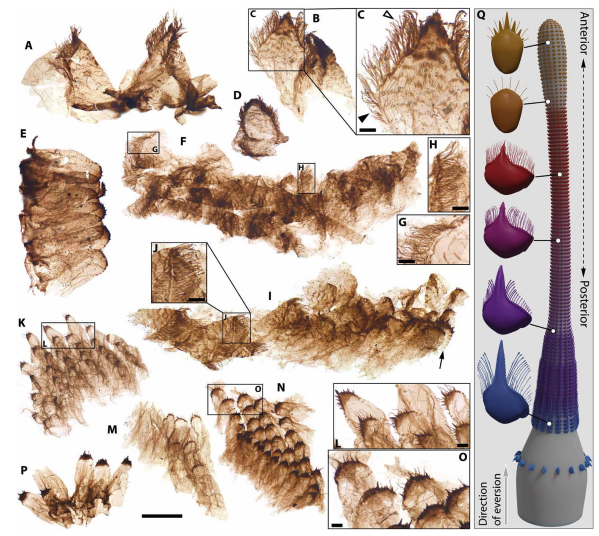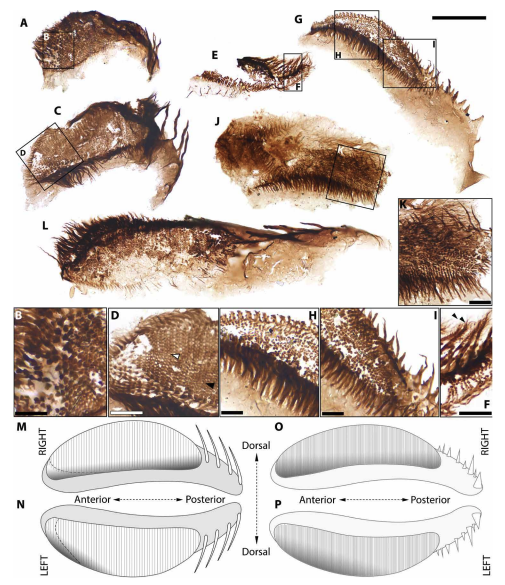A stunning new fossil find from the Grand Canyon fills in some blanks from a time when evolution began experimenting with weird new forms.
About half a billion years ago, life on Earth really started cooking in an event we now call the Cambrian explosion. The fossil record from that time reveals a spike in bizarre, complex creatures appearing within a relatively short amount of time, laying the roots for most of the major animal groups that exist today.
Frustratingly, fossils from later in the Cambrian period are rarer, so we don't have a clear picture of evolution's experimental second album.
But a newly discovered batch of extremely well-preserved fossils could patch up that gap. These are about 505 million years old – 3 million years younger than the Burgess Shale, the layer in which fossils from the Cambrian explosion appear.
Related: The First Explosion of Life on Earth Made an Impact Deep Under The Surface
A team led by researchers at the University of Cambridge found more than 1,500 small, carbonaceous fossils in samples from the Bright Angel Formation (BAF) of the Grand Canyon, which was once a shallow marine environment. The vast majority of the fossils are priapulid worms, along with a couple hundred crustaceans and a few mollusks.
Although ecological resources were plentiful at the time, competition was also on the rise, rewarding species that exploited new niches. Analysis of these fossils revealed a variety of adaptations to do just that.
 Close-up scans of the filaments and denticles of the worm species Kraytdraco spectatus. (Mussini et al., Sci. Adv. 2025)
Close-up scans of the filaments and denticles of the worm species Kraytdraco spectatus. (Mussini et al., Sci. Adv. 2025)A worm species called Kraytdraco spectatus, for example, was found to be covered in teeth sporting elaborate filaments, which varied in shape and length based on where they were on the body. The researchers suggest that they used their tougher teeth to scrape and rake surfaces, kicking up food particles that they could then filter out of the water using the longer filaments.
Crustacean fossils featured signs of suspension feeding by way of tiny hairs that pushed food particles towards the mouth to be ground up by molar-like structures.
The mollusks, meanwhile, sported rows of shovel-shaped teeth that could have been dragged front-to-back to scrape algae or microbes from surfaces.
 Crustacean molars and other structures. (Mussini et al., Sci. Adv. 2025)
Crustacean molars and other structures. (Mussini et al., Sci. Adv. 2025)The Cambrian explosion gets plenty of attention because it's so well-represented in the fossil record, but that was just the beginning. The newly described fossils, with their exceptional level of preserved detail, provide a fascinating glimpse into the time soon after that, when complex life was established and comfortable, and had the stability to start innovating with new forms.
And we should be glad it did: most of the major groups (or phyla) of animals got their start during the Cambrian. That includes arthropoda, encompassing all insects, arachnids, and crustaceans. And there's chordata, which includes us and the rest of our backbone-bearing brethren.
The competitive period of the late Cambrian could have cemented the strategies that helped animals stay successful half a billion years later.
"If the Cambrian Explosion laid the foundations of modern metazoan adaptive solutions, it is the scaling up of their competitive interactions that may have enforced directional, long-term trends of functional innovation in the Phanerozoic biosphere," the researchers write.
The study was published in the journal Science Advances.

.jpg) 7 hours ago
1
7 hours ago
1
 English (US)
English (US)